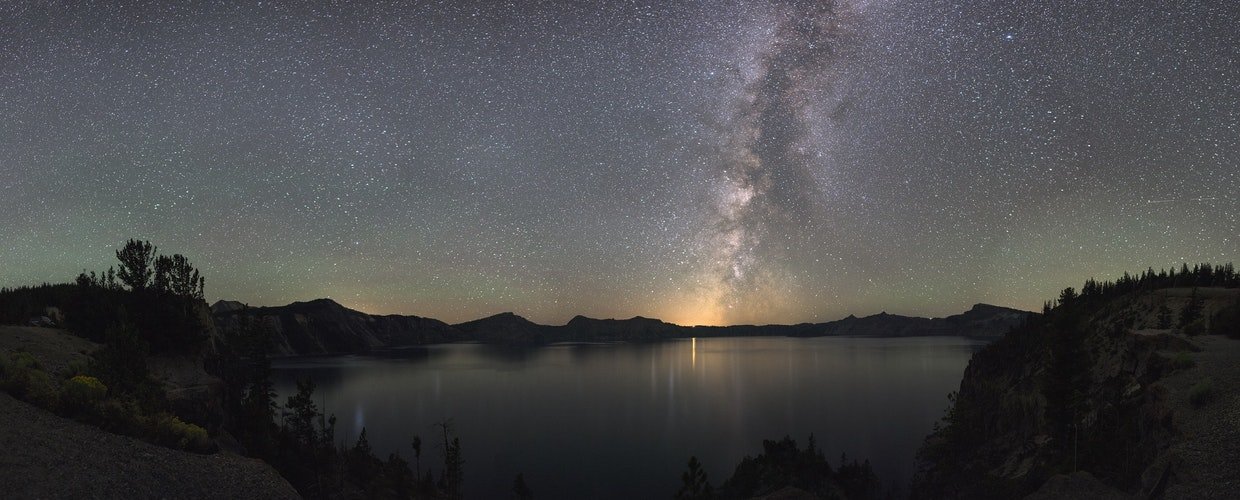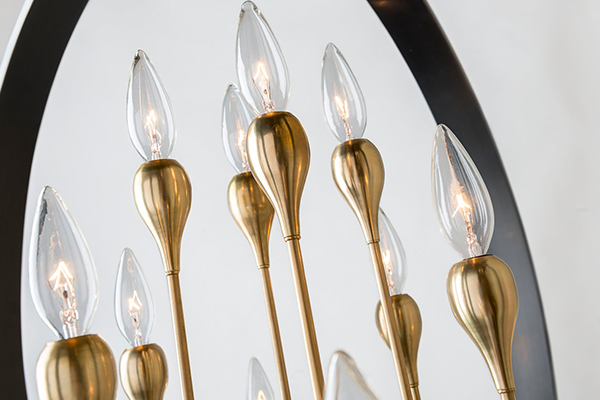Do yourself a favor: Take out your phone, go to whatever calendar app you use, and set a reminder for August 21st. Don’t worry. We’ll wait.
What’s the reminder for? That day, a rare solar eclipse is occurring, and, to varying degrees, it will be visible across America. If you’re not quite sure why that’s worth your time, allow us to explain. But before we do, check out this map supplied by NASA to let you know what time to set that reminder for, based on where you live.
A total solar eclipse is a rare event. It’s completely different from a partial solar eclipse and from the fairly ordinary lunar eclipse. It’s an event, an experience; taking the time to prepare for it and getting outside to see it (safely) will create a memory that will last your lifetime.
When the moon totally obscures the face of the sun during the day, an amazing image is created you won’t soon forget: the face of the sun, seemingly being eaten away by sky and suddenly eclipsed with a dark disk, its light bleeding out all around it in a corona not unlike an aureole in a depiction of Greek God Helios. But this unusual and unnatural sight is only a small part of the event. At the same time, a shadow crosses the face of the earth. This total eclipse of the heart the sun creates what’s called “an umbral shadow;” the swath of land this shadow falls over is called “the path of totality.”

The writer Annie Dillard transforms her experience of witnessing a full solar eclipse into unforgettable imagery and prose in her (most) famous essay “Total Eclipse,” first collected in her 1982 book Teaching a Stone to Talk and newly collected in a retrospective of her work called The Abundance. Partly what makes this essay such a lasting piece of nonfiction is that so much of what is essential about witnessing a solar eclipse is not how it looks but how it feels. Put another way, it’s not so much how the eclipse of the sun looks but rather how that makes everything else look, and how this unnatural-looking change makes us feel. As she tells us about midway through, “What you see in an eclipse is entirely different from what you know.”
“I had seen a partial eclipse in 1970. A partial eclipse is very interesting. It bears almost no relation to a total eclipse. Seeing a partial eclipse bears the same relation to seeing a total eclipse as kissing a man does to marrying him, or as flying in an airplane does to falling out of an airplane. Although the one experience precedes the other, it in no way prepares you for it.”
If you’re thinking, “I’ve seen pictures of eclipses online, they don’t seem that great”, allow your new best friend Annie Dillard to further explain.
“You have seen photographs of the sun taken during a total eclipse. The corona fills the print. All of those photographs were taken through telescopes. The lenses of telescopes and cameras can no more cover the breadth and scale of the visual array than language can cover the breadth and simultaneity of internal experience. Lenses enlarge the sight, omit its context, and make of it a pretty and sensible picture.”
Standing on a vast hill of February-frozen grass in Washington amidst a convocation of other intrepid adventurers who had come out to witness this cosmic event, Annie Dillard recounts just how unlike a pretty and sensible picture it was:
“I turned back to the sun. It was going. The sun was going, and the world was wrong. The grasses were wrong; they were platinum. Their every detail of stem, head, and blade shone lightless and artificially distinct as an art photographer’s platinum print. This color has never been seen on Earth. The hues were metallic; their finish was matte. The hillside was a 19th-century tinted photograph from which the tints had faded. All the people you see in the photograph, distinct and detailed as their faces look, are now dead. The sky was navy blue. My hands were silver. All the distant hills’ grasses were finespun metal which the wind laid down. I was watching a faded color print of a movie filmed in the Middle Ages; I was standing in it, by some mistake. I was standing in a movie of hillside grasses filmed in the Middle Ages. I missed my own century, the people I knew, and the real light of day.”
In places that fall under the path of totality, spectators can experience a harmless but unforgettable thrill: the umbral shadow being hurled at them at great speed. Like people cascading into the descent on a rollercoaster, those with Dillard on the hills that day screamed at the unreality of it. This is not uncommon. In her words:
“The second before the sun went out we saw a wall of dark shadow come speeding at us. We no sooner saw it than it was upon us, like thunder. It roared up the valley. It slammed our hill and knocked us out. It was the monstrous swift shadow cone of the moon. I have since read that this wave of shadow moves 1,800 miles an hour. Language can give no sense of this sort of speed—1,800 miles an hour. It was 195 miles wide. No end was in sight—you saw only the edge. It rolled at you across the land at 1,800 miles an hour, hauling darkness like plague behind it.”

Annie Dillard may have given us the best account of what it means and how it feels to witness a total solar eclipse, but she’s not the only woman of historic note in connection with this celestial phenomenon. To go to the origin of the idea of a solar eclipse as an awesome spectator event put on for us by the universe, we have to go back 148 years to the total eclipse of August 7th, 1869.
It was the first event of its kind advertised and covered by newspapers extensively for weeks. It created a miniature economic boom as people made keepsakes to commemorate the day. According to Maria Popova on BrainPickings, who brought it our attention, “Smoked, stained, or vanished glass sold faster than any other item in American stores that summer.” Towns falling within the path of totality received a huge spike in tourism.
The wondrous event was observed and documented by Maria Mitchell, America’s first female astronomer. Mitchell was the first woman hired by the United States federal government for a “specialized nondomestic skill” (Wow, are you telling me women can do stuff other than cook or clean?) She was basically a walking GPS for the planet Venus. Writing in October, two months after the eclipse, for Scribner’s first magazine, Hours at Home, her piece not only documents the event of travelling to Burlington, Iowa to see it and setting up scientific materials to do so, it carefully obscures the fact that she and her assistants were all women, revealing this only in the final line of the piece.

It’s kind of inspiring how many people make a point to show up and witness a total eclipse. Our universe and what lies beyond it are filled with so many gobstoppingly amazing sights, facts, and phenomena, spending just a little time thinking about them or watching the night sky seems to give us some adjustment or reality check. It also makes us feel more connected to where we live. It’s been noted to the point of becoming a cliché but it’s true: It helps keep things in perspective.
Most of us naturally love feeling connected to the cosmos and have some aesthetic appreciation for its many sights and splendors. Celestial beauty has been influencing art and design as far back as people have been watching the skies.
.png)
Besides their actual forms in the heavens, celestial bodies are used throughout the design and art world. You may notice a coworker’s star pendant on her necklace or a cool galaxy printed shirt. A crescent-moon planter might grab your eye on Pinterest, like on our Celestial Design board. We gravitate towards these items not because of the significance or our knowledge of stars, but because we simply like the way they look. They resonate with something inside of us.
At Corbett Lighting, we’re no different. A number of our pieces take their inspiration from celestial bodies, historical events of the universe, and the neverending beauty of the starry sky. Pieces like our starry sconce, Superstar, our families, Meteor and Big Bang, and our most solar flush mount, Helios, with its gold-and-silver-leafed handcrafted corona, are all designs aesthetically sourced in the celestial.
None of these items can ever hope to rival what Nature’s painted with her own hand, but it’s nice to have reminders of this gorgeous mystery in which we’re all adrift in our homes. After all, our homes are tiny microcosms.
Before leaving you, we thought we’d use the opportunity to share some fun facts about the universe, its study, and celestial art and design.
- Fred Hoyle, a scientist that rejected the Big Bang Theory, actually came up with its famous name. Hoyle scoffed at the idea of the universe being created by some sort of “big bang” during a 1949 BBC radio interview. Kinda catchy, isn’t it? The name stuck.
- Vincent Van Gogh believed his painting depicting an amazing nighttime sky, Starry Night, was a failure compared to his other works of the time. Hundreds of years later, it hangs in the Museum of Modern Art in New York City and is so famous that if Van Gogh were alive now, he might feel like a singer who can’t escape their biggest hit even though they have other great material.
- Under special circumstances neutron stars can spin 600 times per second? That’s 36,000 spins per minute, 216,000 spins an hour, meaning during a typical 8-hour workday neutron stars will spin 1,728,000 times. Think about that as you sit at your desk.
- There are an uncountable number of stars in the universe. While NASA and other scientists have some ideas there’s no way to figure out the exact number. Estimates reach 7 sextillion. Not sure what a sextillion is? That number basically adds up to 70,000 million million million.
- The radiance of a meteor shower was first recorded by German scientist Alexander von Humboldt in the late 1700s while exploring Venezuela. Kosmos was a series of lectures Humboldt gave at The University of Berlin in the mid-1800s. In these lectures Humboldt highlighted the harmony of the universe, suggesting “when one contemplates the beauty of the cosmos, one can obtain personal inspiration and a beneficial, if subjective, awareness about life.”
We couldn’t agree more. Thanks for reading. Happy stargazing.















